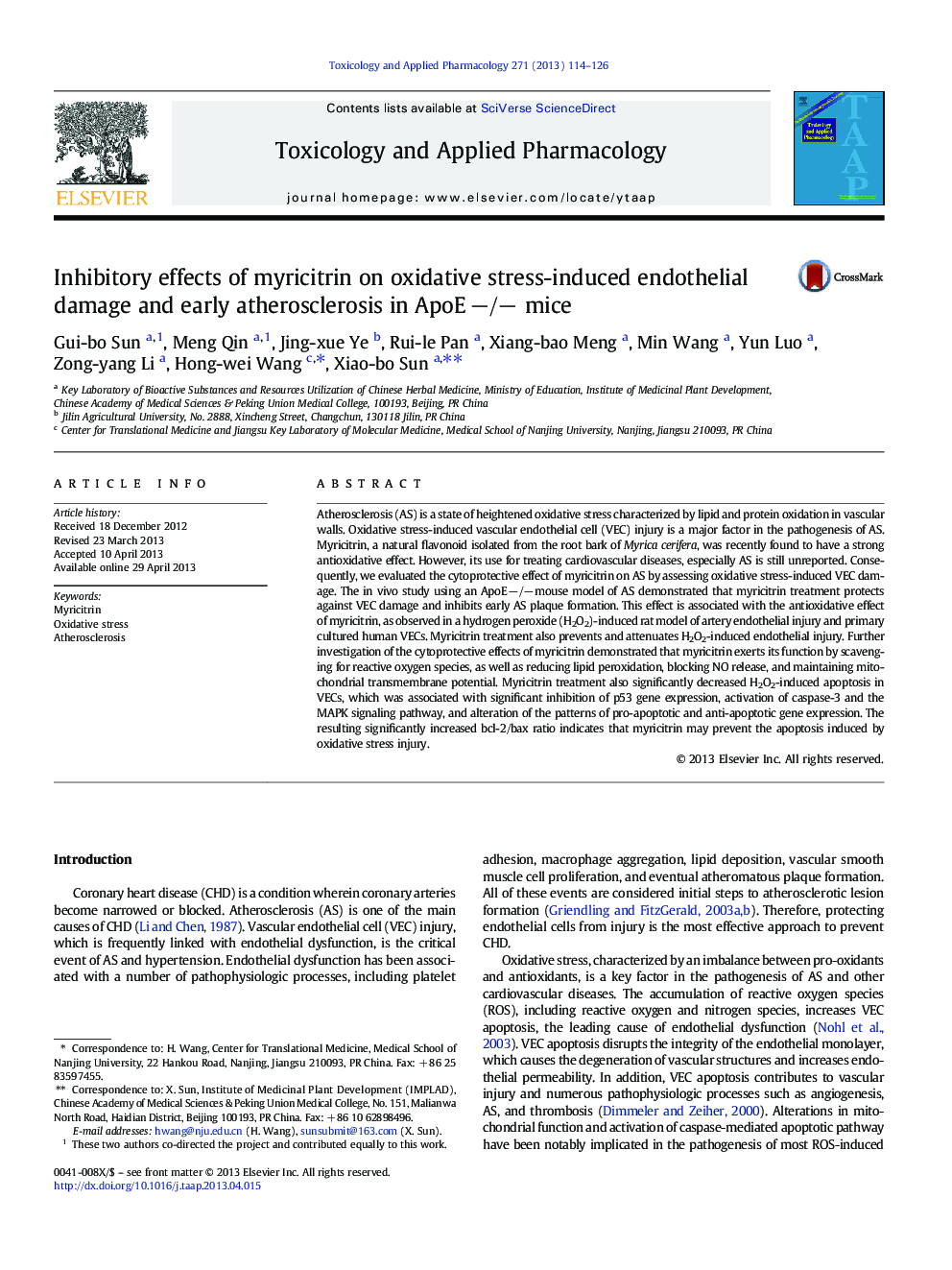| Article ID | Journal | Published Year | Pages | File Type |
|---|---|---|---|---|
| 2568789 | Toxicology and Applied Pharmacology | 2013 | 13 Pages |
•Myricitrin prevents early atherosclerosis in ApoE−/− mice.•Myricitrin protects endothelial cell from H2O2 induced injury in rat and HUVECs.•Myricitrin enhanced NO release and up regulates eNOS activity in HUVECs.•Myricitrin down regulates P53 expression and MAPKs phosphorylation in HUVECs.
Atherosclerosis (AS) is a state of heightened oxidative stress characterized by lipid and protein oxidation in vascular walls. Oxidative stress-induced vascular endothelial cell (VEC) injury is a major factor in the pathogenesis of AS. Myricitrin, a natural flavonoid isolated from the root bark of Myrica cerifera, was recently found to have a strong antioxidative effect. However, its use for treating cardiovascular diseases, especially AS is still unreported. Consequently, we evaluated the cytoprotective effect of myricitrin on AS by assessing oxidative stress-induced VEC damage. The in vivo study using an ApoE −/− mouse model of AS demonstrated that myricitrin treatment protects against VEC damage and inhibits early AS plaque formation. This effect is associated with the antioxidative effect of myricitrin, as observed in a hydrogen peroxide (H2O2)-induced rat model of artery endothelial injury and primary cultured human VECs. Myricitrin treatment also prevents and attenuates H2O2-induced endothelial injury. Further investigation of the cytoprotective effects of myricitrin demonstrated that myricitrin exerts its function by scavenging for reactive oxygen species, as well as reducing lipid peroxidation, blocking NO release, and maintaining mitochondrial transmembrane potential. Myricitrin treatment also significantly decreased H2O2-induced apoptosis in VECs, which was associated with significant inhibition of p53 gene expression, activation of caspase-3 and the MAPK signaling pathway, and alteration of the patterns of pro-apoptotic and anti-apoptotic gene expression. The resulting significantly increased bcl-2/bax ratio indicates that myricitrin may prevent the apoptosis induced by oxidative stress injury.
